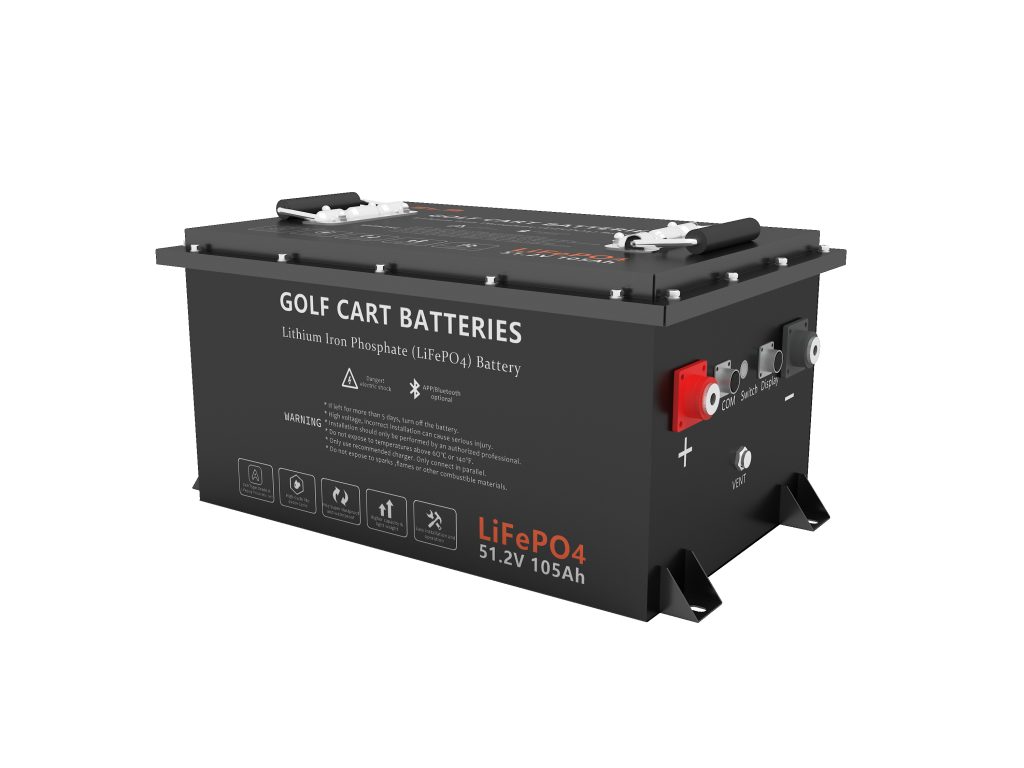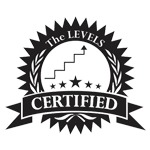
For years, golf cart performance has been limited by lead-acid battery technology. The transition to Lithium Iron Phosphate (LiFePO₄) represents more than an upgrade—it is a fundamental improvement in energy storage design. This article offers a clear technical explanation of why the 51.2V 105Ah LiFePO₄ battery has become the preferred choice for knowledgeable users and dealers.
1. Performance Advantages: LiFePO₄ vs. Lead-Acid
The difference in performance begins at the chemical level. Lead-acid batteries experience high internal resistance and sulfation, leading to voltage drop and reduced capacity over time.
- Steady Voltage Output: A 51.2V LiFePO₄ battery maintains a consistent voltage level throughout most of its discharge cycle. This provides stable power to the motor, ensuring reliable speed and torque. In comparison, lead-acid batteries suffer from voltage decline under load, often resulting in premature power loss.
- Reliable Capacity Under Load: Lead-acid batteries lose effective capacity when used at high power levels. LiFePO₄ batteries, however, deliver nearly their full rated capacity even during demanding operations such as hill climbing, offering dependable energy when it is needed most.
2. Voltage Design: Engineered for Compatibility
The 51.2V rating is intentionally designed for compatibility:
Cell Configuration: This voltage is achieved by connecting 16 LiFePO₄ cells in series, each with a nominal voltage of 3.2V. This design allows the battery to serve as a direct replacement for 48V lead-acid systems, matching their electrical requirements without modification.
3. Intelligence and Protection: The Battery Management System (BMS)
A lithium battery’s reliability depends heavily on its BMS. This system ensures safety, performance, and longevity.
- Protection Features: A high-quality BMS includes:
- Cell Balancing: Maintains equal voltage across all cells, optimizing capacity and service life.
- Operational Safeguards: Protects against over-current, over-voltage, under-voltage, and short circuits.
- Temperature Management: Regulates operation within safe temperature ranges during charging and use.
- Monitoring and Data: Advanced BMS versions support Bluetooth or CAN bus communication, enabling real-time monitoring of charge status, cell conditions, and overall health—a capability not available with lead-acid batteries.
4. Understanding Total Cost of Ownership
Although the initial investment is higher, the long-term economics strongly favor LiFePO₄ technology:
| Cost Factor | Lead-Acid (48V, 210Ah) | LiFePO₄ (51.2V, 105Ah) | Notes |
|---|---|---|---|
| Cycle Life (to 80% DoD) | 500 – 800 cycles | 6000+ cycles | LiFePO₄ lasts significantly longer |
| Replacements (10 years) | 3 – 4 | 1 – 2 | Major long-term savings |
| Charging Efficiency | ~80% | ~97% | LiFePO₄ uses energy more effectively |
| Maintenance | Annual cost & effort | $0 | No watering or terminal cleaning |
Conclusion: For frequent users, the return on investment is typically achieved within 2 to 4 years.
5. Conversion Guide: Steps for a Successful Upgrade
Note: If unfamiliar with electrical systems, seek professional assistance.
- Evaluation: Review your golf cart’s wiring and components. Take note of the controller, motor, and existing charger specifications.
- Removal:
- Disconnect the negative (–) terminal first, then the positive (+) terminal of the old batteries.
- Remove the lead-acid units and clean the battery tray thoroughly.
- Installation:
- Secure the new LiFePO₄ battery using suitable mounting hardware.
- Important: Use high-quality cables and connectors of the correct size.
- Connect the positive (+) cable first, followed by the negative (–) cable.
- Charging:
- Essential: Use a charger designed specifically for 51.2V LiFePO₄ batteries. Lead-acid chargers are not suitable and may cause damage.
- The correct charger uses a constant current/constant voltage (CC/CV) charging profile.
Conclusion: A Superior Engineering Solution
Upgrading to a 51.2V 105Ah LiFePO₄ battery is a decision supported by science, engineering, and cost-effectiveness. It offers unmatched performance, extended service life, and considerable savings over time.
ELB Power Series 51.2V 105Ah Battery incorporates these principles. Built with automotive-grade LiFePO₄ cells, a robust BMS with Bluetooth connectivity, and a durable housing, it is designed to be a long-term power solution for your golf cart.





